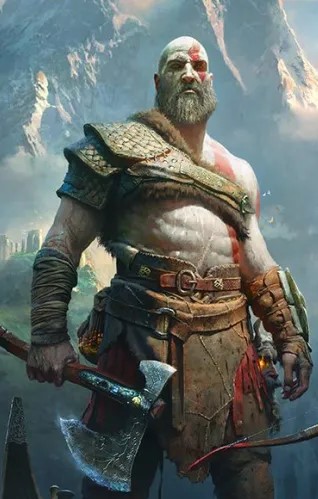
How to Write Engaging Character Description
Having strong, interesting characters is one of the most important parts of storytelling, regardless of medium. While the best way to create interesting characters is giving them a strong voice and personality, there is another important element into making an engaging and memorable character: character design.
This is where visual mediums have the upper hand over books. Character designers can make a character unique with colour choice or shape language. Music, lighting, and film tricks can give off a certain atmosphere when a character walks on screen.
Authors, on the other hand, don’t have that. So, how can we create characters that are on par with visual mediums? How can we give the audience a clear image of what a character is meant to look like? How can we match what visual mediums are able to do so easily?
Here are a few tricks for creating memorable, engaging character descriptions:
1. Engage the Senses
There is far more to character design than just the appearance of the character. Think about the people you meet: what stands out to you about them? Odds are, the first thing you notice about them isn’t the colour of their eyes or the exact hue of their hair. Maybe they have a certain smell to them, or move in a unique way. Maybe they’re exceptionally tall or short, or speak with a particular cadence or tone.
As writers, we can engage the senses in narrative that visual mediums would need to have characters outwardly talk about. You only know that tauntauns in Star Wars stink because Han mentions it in The Empire Strikes Back, as an example. In a book, the smell could just be mentioned discreetly through a narrator or character voice.
Here’s a few examples:
A) Movement and Sound
“Glokta’s walking made a steady rhythm on the grimy tiles of the floor. First the confident click of his right heel, then the tap of his cane, then the endless sliding of his left foot, with the familiar stabbing pains in the ankle, knee, arse, and back. Click, tap, pain. That was the rhythm of his walking.”
– The Blade Itself; by Joe Abercrombie
Glokta has a lot going for him in his character description: his gap-toothed smile, his weepy eye, the fact that he always wears a wide-brimmed hat when he goes out, etc;
But the part of his description that always stands out is his movement and sound. Even before I read The Blade Itself, I had heard this description. The line “Click, tap, pain. That was the rhythm of his walking,” stood out to me for years. Not the fact he was a cripple, or that he was a once-handsome man, but the fact that his movement had a unique and notable rhythm to it.
B.) Smell
“Dustfinger felt the man’s breath on his own skin. Basta’s breath smelled of mint, fresh and sharp. Apparently a girl he’d once wanted to kiss had told him he had bad breath. The girl had regretted it, but ever since then Basta chewed peppermint leaves from morning to night.”
– Inkheart; by Cornelia Funke
“One benefit of the cold was that the smell wasn’t so bad, but Vonvalt still held a kerchief filled with dry lavender to his nose. He could be fussy like that.”
–The Justice of Kings; by Richard Swan
This is often just used as a side detail in character description, but I personally find that it adds a lot of flavour to the character. Even better, smell, unless brought up in dialogue, is unique to writing.
Basta constantly chewing mint isn’t just a character note about his insecurity. The smell also helps give another dimension to his description.
Vonvalt isn’t described as smelling like lavender, but knowing it’s a scent he particularly likes and that he’s sensitive to smells, once again, adds an extra layer of character detail.
That’s one of the cool things about using smell in character description: it not only creates a stronger visual and adds more depth, but it often informs small details about the character, making them even more fleshed out. Scent can also be used to inform character profession. Maybe a carpenter smells like sawdust, or a blacksmith smells like metal. Scent is also very powerful when writing romance. How often are there ruggedly handsome men who smell like a forest or musk? Scents are a great way to pull a reader deeper into the scene, environment, and character.
C.) Vibe
“The butcher was walking slowly toward them, wiping his hands on a cloth. He looked maybe sixty but heavily built, with a strong face, deeply lined, and a close-cropped grey beard around his mouth. He was entirely bald, and the afternoon sun shone brightly off his tanned pate. He was neither handsome nor majestic, but there did seem to be something about him. An assurance, an air of command. A man used to giving orders, and to being obeyed.”
– The Blade Itself; by Joe Abercrombie
And I’m here with another description from The Blade Itself. The sense of Bayaz being a normal-looking man but giving off an “air of command” is exactly what I mean by bringing up the vibe that characters give off. When a character walks on screen, sometimes there’s just something about them that isn’t in their appearance, but more of a “sixth sense” kind of thing.
2. Describe the Notable; Be Sparing on the Little Things
I’d like to give this little caveat first:
The level of description you have in your book is entirely dependent on your writing style.
Books of an older or more poetic writing style will go into much greater detail about character description than a more modern, simple writing style. A comedic style, though it also tends to have longer descriptions, will focus on different details for the sake of comedy.
Make sure you know what style you’re going for with your writing. Unless you’re going for an older or more poetic style, you probably don’t need to go into too much detail about what your characters look like, unless it’s important to who they are and their design – and even then, it’s usually best to focus on the important and notable things.
Here’s an example: Let’s say I’m describing Kratos, from God of War, as he appears in the 2018 game.

Let’s describe him in two different ways, as though I need to get his entire physical description out within a paragraph or two.
Example One:
The man was big, both tall and bulging with muscle. His chest was bare, and his skin was inhumanly pale, like ashes long gone cold, a long scar visible on his midsection, echoed on his back. Over the left side of his body were tattoos, a thick red line that coiled around his side and shoulder, one end of it wrapping over his hairless scalp and crossing his eye, ending on his cheek. The right eye was crossed by a thin scar, running from his jaw to his forehead. A thick black beard adorned his face, and he looked like a man who never smiled, expression seeming to be locked in a permanent scowl. His eyes were bright and clever, holding a dark orange hue as they glared out from under a heavy brow.
A pauldron of studded leather was on his right shoulder, held on by a thick strap, a lining of black fur peeking out from beneath. Fabric and leather wrapped his forearms, and a wider piece of leather was wrapped around his waist, serving as armour, layered over dark breeches. The end of the wrap almost reached the top of his tall, well-worn boots. In his hand was a massive axe, the haft made of wood, the heavy metal head carved with runes.
How long did it take you to zone out while reading that? Did it feel overwritten? Too long? Like too much detail?
Now let’s describe him in a more succinct way, focusing on the important details:
Example Two:
The man was big, and muscular in a way that suggested he knew how to use the enormous axe he casually held in his hand. His skin was inhumanly pale, like ashes long gone cold, the only colour coming from the scarlet tattoo that wrapped around the left side of his body, coiling over his hairless scalp to cross his eye. An enormous scar lined his abdomen, a second crossing his right eye, giving his face a brutal kind of symmetry. He didn’t look like a man who smiled much, his mouth locked into a permanent scowl beneath his black beard, eyes locked in a permanent glare. He wore scant leather and fur, most of his skin visible, but the cold didn’t seem to touch him.
Both examples were written for a more descriptive style, but one is clearly more to the point than the other. The second example gives a stronger sense of character by cutting out unnecessary details about clothing, combining parts of the description to give a clearer, less cluttered picture of what the character looks like. (I’d also like to point out that, if he were being described in a book, it would usually be best to use character voice and context clues to describe him. Elements of the description should be sprinkled throughout the book itself, rather than put in one long description-dump.)
We don’t need to know exactly what his armour looks like. We don’t need to know the colour of his eyes, as the narrator describing him probably isn’t close enough to see them, anyway. His most notable features are his skin, tattoo, scars, beard, baldness and strength. In terms of character, at first glance he’s most notably humourless, angry, and brutal.
That’s it.
To establish what a character looks like, it’s important to have detailed descriptions, but it’s equally important to know what details are important, and which ones can be left by the wayside.
3. Form and Function are Equally Important
Not every character needs to be wearing entirely logical clothing. A character or world’s fashion sense, be it over-the-top or basic, is just as important as the function of their clothing.
There. I said it.
Something I see a lot of character designers bring up is that character design should be simple, avoiding unnecessary ornamentation. Just look at people complaining about the character design work of Final Fantasy artists like Tetsuya Nomura and Yoshitaka Amano.
Where that’s true for characters that have to be drawn over and over, this isn’t always the case. People wear illogical and weird clothing all the time; and yes, this even goes back to medieval armour. Just look at codpieces on antique armour, or the insane amount of unnecessary ornamentation on the helmets of samurai.
Don’t underestimate how far a broad description can take you. Readers will, generally, be able to fill in the details with their own imaginations. (For example: “He wore elaborate armour, marked with swirling patterns, his helmet ornamented with a pair of tall, straight horns.”) Just because something looks ornate and decorated doesn’t mean you have to spend pages describing it.
Aesthetic is a very real thing, and a very real reason for people to choose what they wear. If it fits the world and character, there’s nothing wrong with giving them outlandish fashion choices.
That being said, take your character’s personality, culture, and situation in consideration when choosing their clothing. If you’re bringing a detail to attention through your description, make sure that it is serves the world or character.
4. Trust Your Audience to Remember Details
This is a big one.
Your readers don’t need to be reminded about your character’s description on every page.
It’s one thing to see this in older books (for example, in Michael Moorcock’s Elric Saga, our titular character Elric is often called the albino prince, or we are reminded of his milk-white hair or crimson eyes), but that is part of a writing style that is no longer popular. It’s not that the writing style is bad, per se, but it’s not exactly favoured by the modern reader.
How many times have you seen jokes about romance love interests constantly having their scent described? Or the constant reminders of a self-insert character having purple eyes?
Your readers are smarter than you think. It’s fine to have the occasional reminder of a character’s description, but be sparing. Trust your readers to remember what your character looks like.
Conclusion
Character design depends on the world and the character, and the delivery of that design depends on the writing style. However, that doesn’t mean there aren’t basic guidelines to keep in mind, regardless of the style chosen.
- Engage the Senses
- Focus on the important details
- Use fashion to inform your world and character
- Trust your reader to remember
These are all things that can help make your characters descriptions more interesting, more memorable, and more impactful. Character design is deeper than just appearance, and, by doing it right, a few words can paint an image just as vivid as any visual media.
For writing updates and a peek behind the scenes, sign up for my newsletter here!





